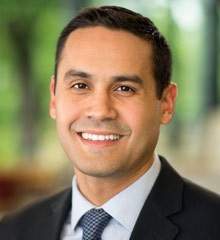
There is No Front of the Classroom
I really don’t intend to undercut the title of this series of blogs. I promise I don’t.
 But what happens when the classroom doesn’t have a front where the eager students sit ready to learn or a back where more laid-back students lean away from us? What happens when the classroom is not a room at all?
But what happens when the classroom doesn’t have a front where the eager students sit ready to learn or a back where more laid-back students lean away from us? What happens when the classroom is not a room at all?
When I teach online, the “classroom” is a helpful but limited metaphor. There is still a sense of place and locatedness in this “classroom” even if it is diffused. Students still focus on a common subject area, online forums gather students together around common questions, and synchronous Google Hangouts help students and teacher see each other face to face.
But there are no walls. There is no classroom in the traditional sense. Instead, students have to become co-learners in this process, take ownership over their learning in a deep way. Certainly, I provide key resources and lectures for their learning, but the bulk of their understanding grows, not as they sit at my feet but in their implementation and reconfiguring of that which I’ve taught and they have taken up.
And because of that, online pedagogies require some radical rethinking.
After all, so much of our teaching is imitative. We rely on models of excellent teachers who have shaped us. But how many of us had models of effective online teaching?
 The temptation, of course, is to import our residential course into an online format. Record a series of lectures, assign readings, and require comprehensive writing assignments. There is a limit to the effectiveness of such teaching in a new medium. Initially, we are not leveraging the capabilities of this form of instruction. But more importantly, we miss an opportunity to rethink and revise our core assumptions about teaching and learning.
The temptation, of course, is to import our residential course into an online format. Record a series of lectures, assign readings, and require comprehensive writing assignments. There is a limit to the effectiveness of such teaching in a new medium. Initially, we are not leveraging the capabilities of this form of instruction. But more importantly, we miss an opportunity to rethink and revise our core assumptions about teaching and learning.
Think about it this way. My daughter’s elementary school recently announced plans to distribute iPads to every student. Yes, we have come a long, long way from the Apple IIe on which I played “Oregon Trail” and “Number Munchers” using literally “floppy” disks. (Look it up, kids!)
In order to train teachers with this new educational tool, the school district pointed to four different ways teachers can use technology in the classroom (aka the SAMR Model).
- Substitution: Completing activities the teacher previously accomplished in the classroom using technology. Basically, a one-to-one trade.
- Augmentation: Completing previously accomplished classroom assignments but with some “functional” advantage the technology allows. Such as automatic grading of quizzes.
- Modification: Shifting the production of assignments in a more significant sense by adding an enhanced component made possible by new technologies. Perhaps adding an audio or visual component to a writing assignment.
- Redefinition: Transforming the assignments. That is, the technology allows the completion of assignments in a way and form that was previously impossible. This is where truly innovative pedagogies take off.
Without rethinking our pedagogies, online learning does not go far beyond the first two categories. But what might it look like to take this new medium as an entirely different platform for education. What if we were to leverage the fact that there is no classroom, that our students find themselves in a variety of contexts and locations even as they engage a common subject?
 We might even discover modes of learning which online teaching can achieve better than face-to-face learning. Yes, that’s right. What if it turns out that online learning is actually better in a number of teaching scenarios? What if it is the harbinger of a pedagogical shift that will draw us from teaching habits belonging to epistemological assumptions that we no longer hold?
We might even discover modes of learning which online teaching can achieve better than face-to-face learning. Yes, that’s right. What if it turns out that online learning is actually better in a number of teaching scenarios? What if it is the harbinger of a pedagogical shift that will draw us from teaching habits belonging to epistemological assumptions that we no longer hold?
What if online learning is not a panacea at all for solving the many crises now dogging higher education but is actually the very means by which we can become the teachers we have always wanted to be?
I feel like my learning community has been groping around trying to get to redefinition, but we’re not there. Where do we go from here? What is redefinition for you?
I think the perfect term is “Virtual Classroom”. Getting online training is really like attending a section of virtual classroom. Where there is no any actual classroom, teacher etc.
Personally I like to use online learning platforms to learn about various things. It is really a best way of learning many things in shortest period of time.